Since the Middle Ages, Akershus Castle and Fortress has been a landmark of Oslo. Here is its fascinating story.
Akershus Fortress is a medieval castle on the waterfront of the Norwegian capital Oslo. Originally built to protect the city and provide a royal residence, the castle has also been used as a military base and prison.

When I first moved to Oslo, it was one of the first places I went to visit. Wandering the grounds gives you a sense of how the city used to be–and offers great views across to Aker Brygge and out to the Oslofjord.
But this is no museum! While the halls of the castle tell many stories of Oslo's history, the fortress is still actively used today. Many cultural and administrative functions are based here and the government uses it for formal events.
Let's take a closer look at the fascinating history of the castle and fortress.
Table of Contents
A medieval castle
Akershus castle was originally a military stronghold built in the late 13th century by King Haakon V. It also served as a royal residence for the King and his administration.
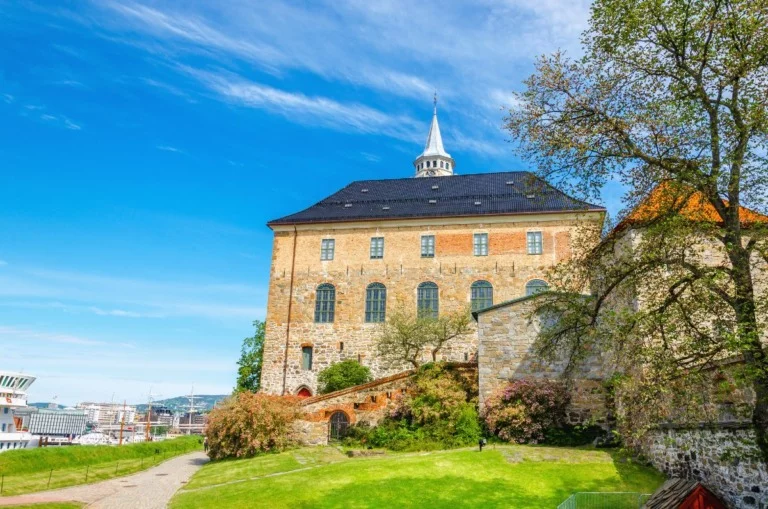
The fortress was first used in battle in 1308 as Swedish duke Eric of Södermanland attempted to take the castle. 140 years later, the castle was besieged again by a Swedish king.
Attempts to take the fortress continued sporadically throughout the late Middle Ages.
A landmark for Christiania
Christian IV served as the King of Denmark and Norway from 1588 to 1648. He did a lot during his 59-year reign, but one of his longest-lasting legacies was the renovation of the castle into a modern fortress.
During his reign, the castle was transformed with bastions to the north, east and southeast and an expansion of the fortress grounds. Earthworks and wooden barriers were built prior to stone fortifications.
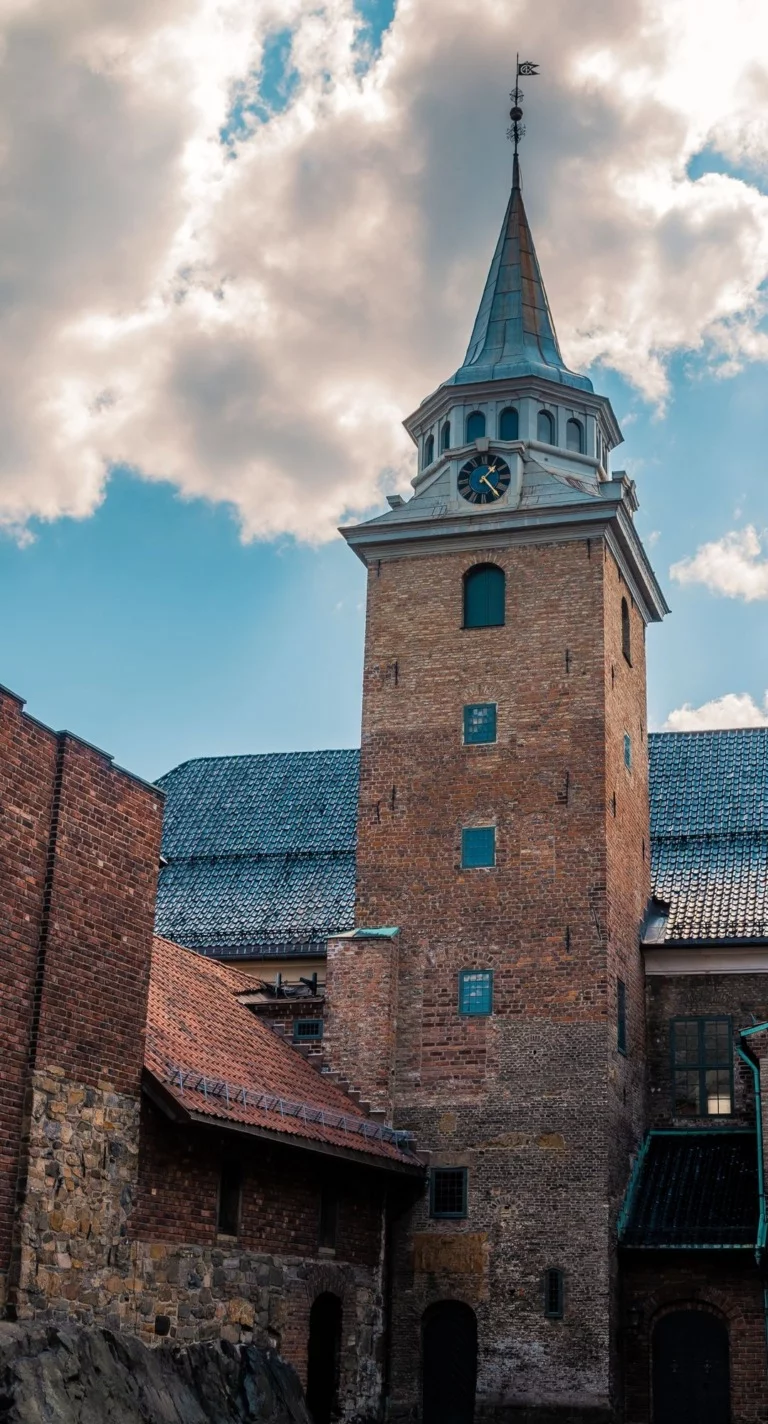
The great fire of Oslo in 1624 devastated the old city. By the King's order, a new city was built north of Akershus to be called Christiania. The castle was improved and would go on to serve as a palace until the turn of the 19th century.
In addition to its function as a royal palace, the fortress served as a prison for large parts of its history. It played host to many famous prisoners.
The Lofthuus case
Born in Southern Norway's Risør in 1750, Christian Jensen Lofthuus was one of the most prominent peasant leaders in Norway during the Danish-Norwegian era. He began a movement which ended in rebellion. He is credited with a playing a key role in the movement for independence which culminated in 1814, 17 years after his death.
Lofthuus was aprehended in March 1787 after a nationwide search. He was held at Akershus Fortress close to the main guard house so guards could always see the entrance to his place of confinement.
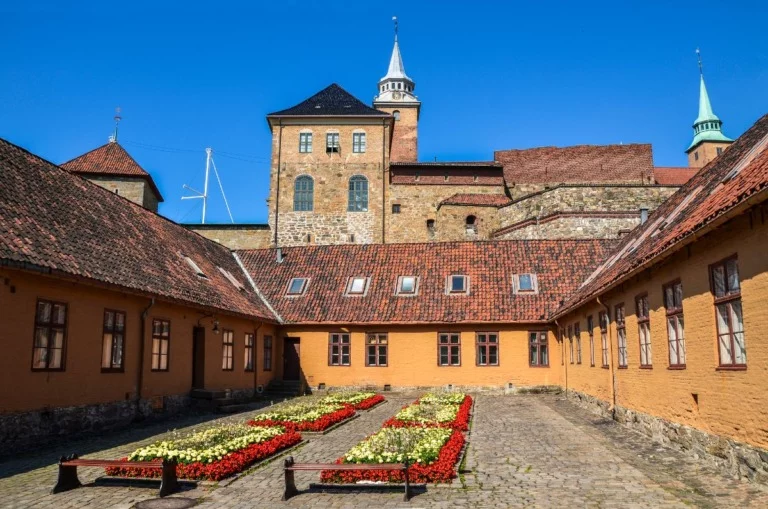
He was chained to a block of timber and a guard was ordered to check on him hourly to prevent any means of escape. Given the nature of his imprisonment, Lofthuus achieved celebrity status, much to the frustration of some.
In the words of Christiania's wealthiest man, Bernt Anker: “This Lofthuus is a vile sole, a villain in the bourgeois life, and a stupid rebel in the political one. People run along to seee this miserable man, who dares fatten himself in his chains. Some will call this pathetic person a new Washington, but should I desire to see him, it would be to spit him in the face.”
In March, 1792, Lofhuus was sentenced to prison work in iron for life. His accomplices had to pay fines and work at the fortress for up to three years. Lofthuus died from a stroke in 1797.
Akershus in World War II
Occupying German forces seized control of the fortress during World War II. It was used as a prison for deserters and other criminals along with Germans opposed to the Nazi system. Some Norwegian resistance members were also imprisoned here.
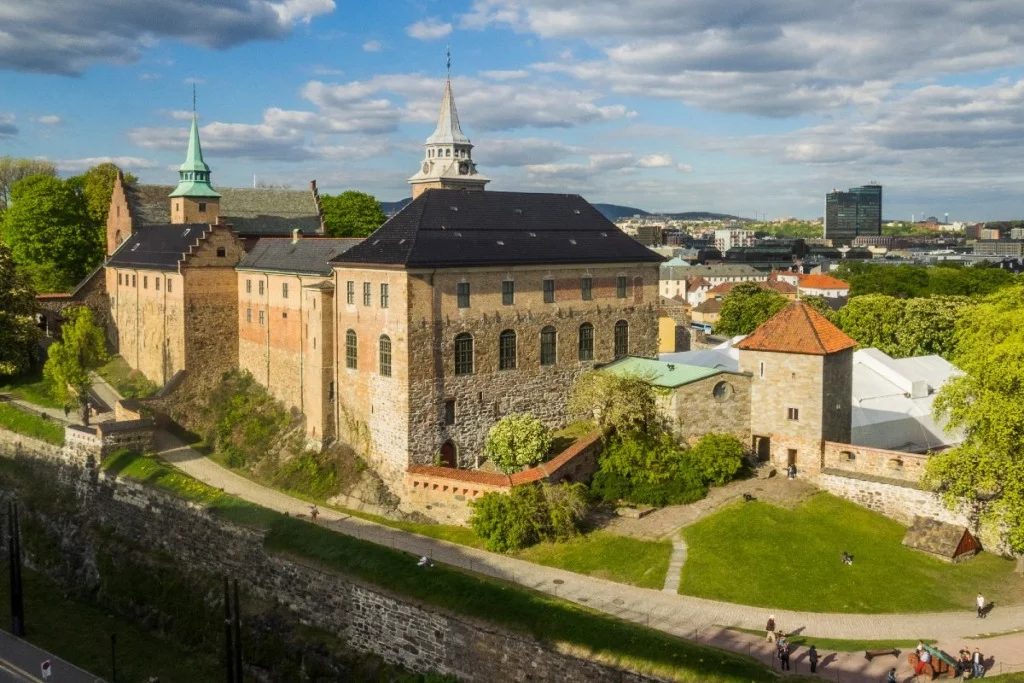
Most prisoners were locked up in the tower, where they received terrible treatment. So bad were the unsanitary conditions and meagre food that it was named “death's waiting room.”
It is impossible to get a complete picture of what went on as the archives were burned during the German surrender. However, at least 42 members of the Norwegian resistance movement were known to have been executed at the fortress.
Museums at Akershus fortress
The site is home to two of Oslo's museums. The Norwegian Resistance Museum (Norges Hjemmefrontmuseum) tells the story of domestic events during the German occupation of Norway in World War II.
Hosted in the 17th century stone vaults, the audio-visual exhibits give an impression of what life was like under foreign rule. It covers the pre-war times through to the liberation in May 1945.
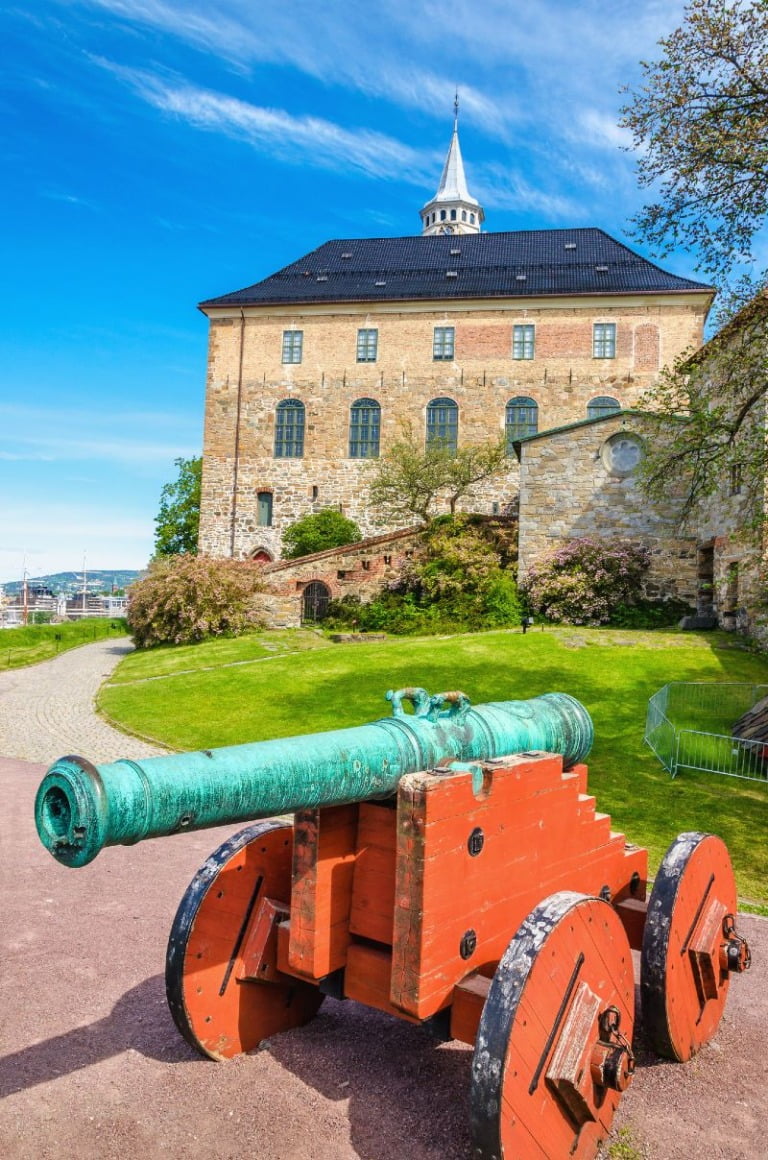
The Armed Forces Museum (Forsvarsmuseet) covers Norwegian military history from the late Viking Age including numerous wars and unions with Denmark and Sweden. It also touches on the beginning of World War II and the Cold War.
The Akershus county name and crest
Prior to the creation of Viken county, Akershus was one of Norway's counties. Going back further, Akershus was a much larger fief and county that encompassed much of eastern Norway.
Introduced in 1987, the coat-of-arms of the previous Akershus county depicts a gable from the fortress.






l Liked wery much this streets photo up of the Discover the districts of Oslo very nice .Only byscle on the streets.No car.Which part of Oslo is this streets?..
Very nice.Old castle and Palace of Norwegen Kingdom.lf l have a possibility l wish to see.l have been İn Oslo during October 1995.But no time to see.May be next visit hopefully.
I’m wondering if Aker or Akers is a Norwegian family name. What do some of you know?